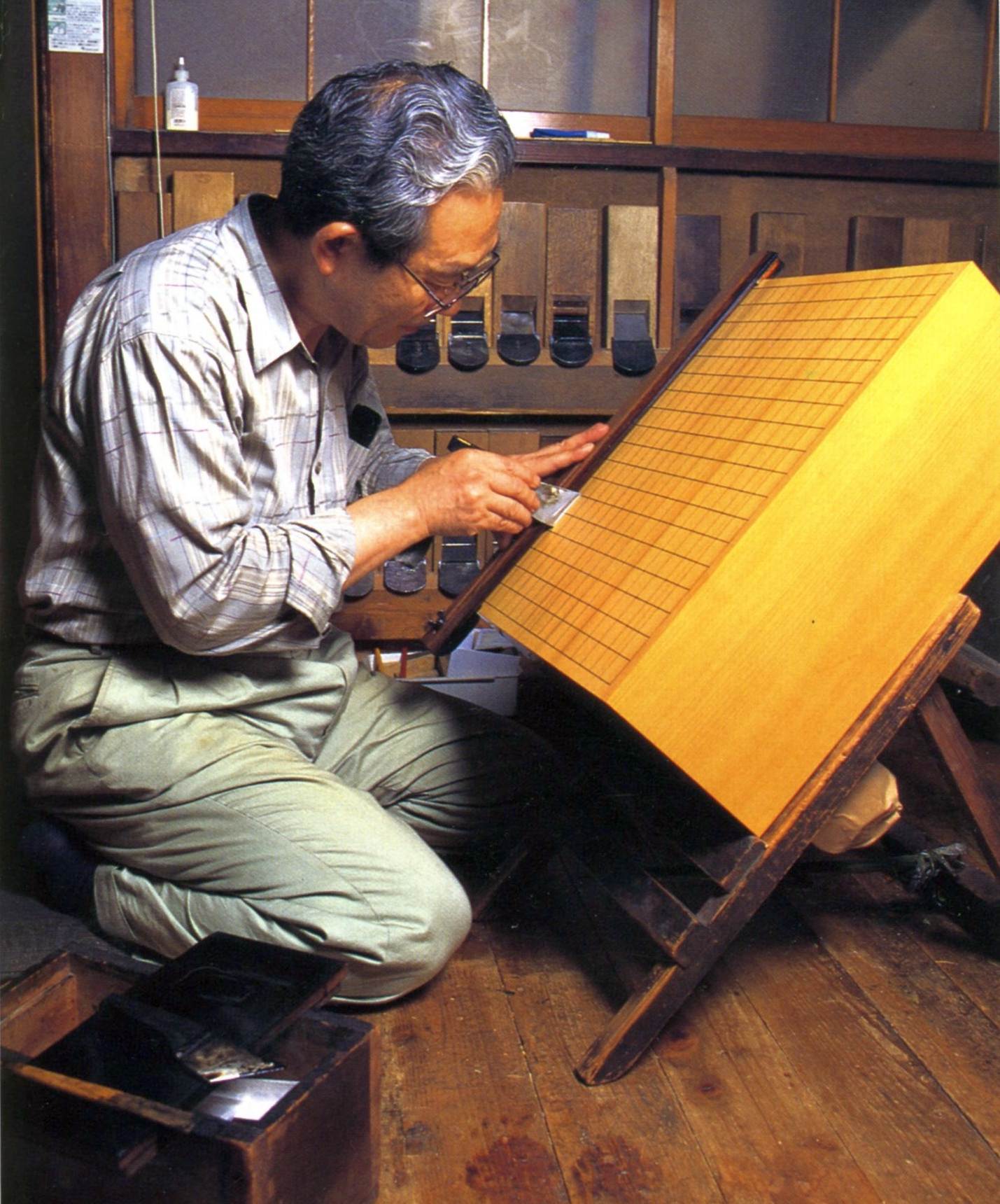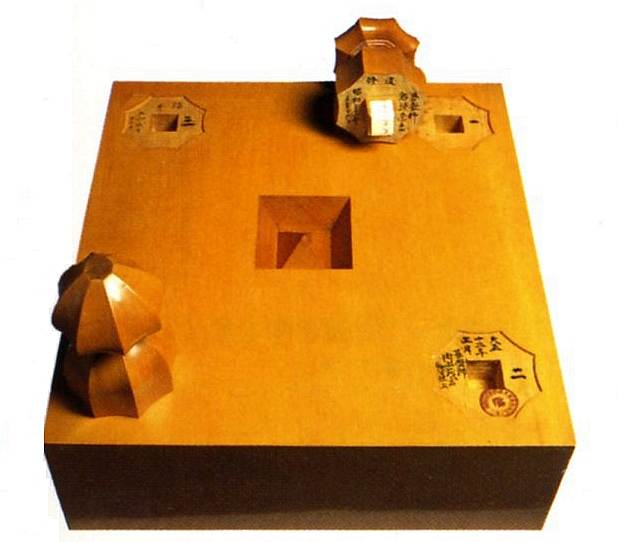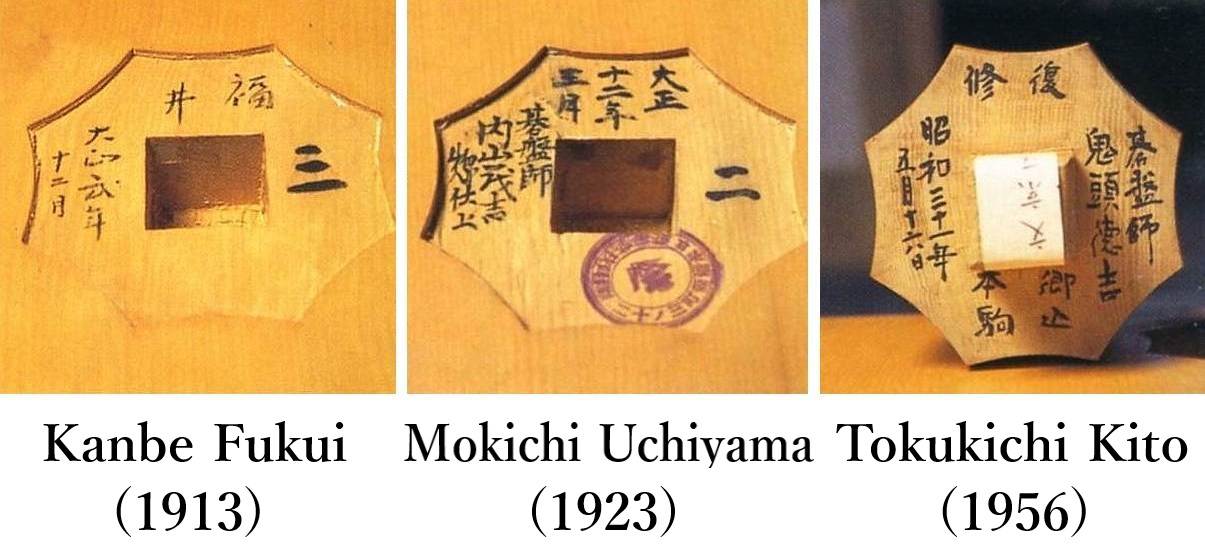
In the Edo period, when a player reached the rank of Meijin (9-dan), he was ordered by the shogunate to a position called "Godokoro", and recognized as a leader in his field. He stood at the top of the four Iemoto (heads of state) and was given the right to issue diplomas and take care of other Go-related matters.
In the same way, there was "Gobandokoro" for making Go boards, and those who were recognized as master craftsmen were assigned to the position.
One of the masters of Go board making that has been handed down from generation to generation is Fukui Kanbei, the last Go board maker of the Tokugawa Shogunate. He died in the first year of the Taisho era (1912), but his skill was so great that he came to be known as "Meijin Kanbei". However, Fukui Kanbei was adamant in his refusal to accept the title of Meijin, saying that he was still not as good as Kyubei.
During the Meiji and Taisho periods, people used to say "Meijin Kyubei, Jyozu (8-dan) Kanbei" as if it was a gossip, but few people have actually seen Kyubei's board, and only a few of Kanbei's boards remain today.
These masters wrote their names on the hundreds of Go boards they made during their lifetime. When future generations look at this wonderful Go board and wonder who made it and want to know the name of the creator, they can pull out the four legs and find the name of the craftsman written in a quiet way on one of the legs. It is not for advertising purposes.。
Speaking of a famous Go board maker in the Taisho era, Uchiyama Mokichi, who was exhibited at the World Exposition, is famous. Uchiyama was so impressed with Fukui's board that he studied and improved his skills, hoping to somehow come close to the master Kanbei, and in his later years he is said to have come close to that level.
Nakayama 7-dan's famous board

As the time passed from the Showa era to the Heisei era, some Go board masters were called "Meijin", and my father, Tokukichi Kito (deceased), was one of them. He was favored by many lovers of Go and professional Go players of the Nihon Ki-in.
This board is Tenchi-masa we gave to a professional Go player, Mr. Noriyuki Nakayama, and three of the four legs are marked with the names of Go board masters.
The first one is written "December, 1913 Fukui", and this is Fukui Kanbei, a master of the Meiji era. The next is Uchiyama Mokichi, a master the Taisho era, and the third leg has Kito Tokukichi's name on it. The board has been in use since 1923, so it was distorted a lot, but we fixed it completely.
Three generations of master craftsmen have worked on this board. Usually, the craftman who fixes a board afterwards does not write his name on a board made by someone else, but this board must have been very attractive to him. It is a genuine "famous board" that is rarely seen nowadays, and it is wood from the Aya Forest Office in Hyuga, and it is over a thousand years old.
It is said that Go board masters should never fix the feet and belly button. So if you look at the feet, you can tell whose work it is. This feet were made by Kanbei, but my father said, "Please keep using it". It is not too thick and is good for daily use. It is light and has an excellent feel. It is a board that embodies the beauty of use.
Both my father and Nakayama 7-dan have already passed away, but if the name of a new Go board master is engraved on the fourth leg of this board, I think it will be a great pleasure for all the craftsmen.

Back to Top